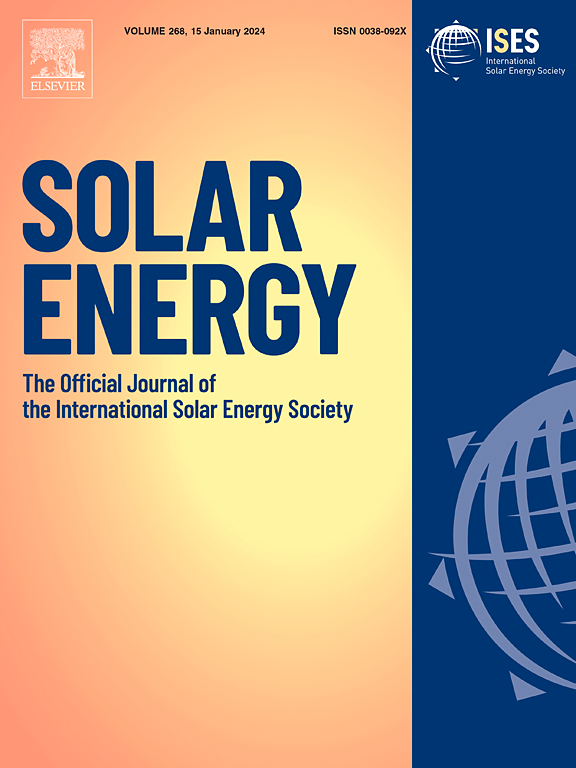基于调峰粒子的聚光太阳能发电的人工智能辅助优化和技术经济分析
IF 6
2区 工程技术
Q2 ENERGY & FUELS
引用次数: 0
摘要
商业聚光太阳能发电(CSP)系统依靠具有成本效益的储能技术为电网提供有价值的服务。然而,在不同时段(TOD)定价的购电协议(PPA)背景下,定制优化的 "调峰 "系统受到的关注相对有限。在本研究中,开发了一个额定功率输出为 100 兆瓦的粒子式 CSP 系统的系统级模型,其中包括详细的组件级模型、基于线性规划的移动窗口调度优化器,以及用于加速计算的基于人工智能的接收器和功率模块组件的代理模型。该系统针对一系列设计变量进行了优化,包括电场和塔架布局、存储容量和绝缘厚度,以及指定的 TOD 价格表。系统级优化使 PPA 投标价格(Lbid)最小化,而调度优化器则使 TOD 加权能量输出(T̄E)最大化。优化调度系统的资本成本比为即时调度和能源平准化成本(LCOE)最小化而设计的系统低 32%,年调度电量减少 39%,但实现的平均售电价格几乎是天真的 LCOE 优化系统的两倍。尽管这些结果是针对本文所考虑的 TOD 案例得出的,但本研究强调了在现实电网环境中实现高价值的 CSP 系统设计综合方法。本文章由计算机程序翻译,如有差异,请以英文原文为准。
AI-aided optimisation and technoeconomic analysis of peaker particle-based concentrated solar power
Commercial concentrating solar power (CSP) systems depend on the cost-effective use of storage to provide a valuable service to the electricity grid. However, the tailoring of optimised ‘peaker’ systems, within the context of power purchase agreements (PPA) with variable time-of-day (TOD) pricing has received relatively limited attention. In this study, a system-level model of a particle-based CSP systems with nominal power output of 100 MW˙e is developed with detailed component-level models, a moving-window dispatch optimiser based on linear programming, and AI-based surrogate models of the receiver and power block components to accelerate calculations. The system is optimised for a range of design variables including those for field and tower layout, storage capacity and insulation thickness, for a specified TOD price schedule. System-level optimisation minimises the PPA bid price (), while the dispatch optimiser maximises the TOD-weighted energy output (). The optimal-dispatch system has a capital cost 32% lower than a system designed for immediate dispatch and minimised levelised cost of energy (LCOE), and dispatches 39% less annual electricity, but achieves an average electricity selling price that is nearly double that of the naive LCOE-optimised system. Although these results are specific to the TOD case considered here, this study highlights an integrated approach to CSP system design for high value in a realistic grid context.
求助全文
通过发布文献求助,成功后即可免费获取论文全文。
去求助
来源期刊

Solar Energy
工程技术-能源与燃料
CiteScore
13.90
自引率
9.00%
发文量
0
审稿时长
47 days
期刊介绍:
Solar Energy welcomes manuscripts presenting information not previously published in journals on any aspect of solar energy research, development, application, measurement or policy. The term "solar energy" in this context includes the indirect uses such as wind energy and biomass
 求助内容:
求助内容: 应助结果提醒方式:
应助结果提醒方式:


